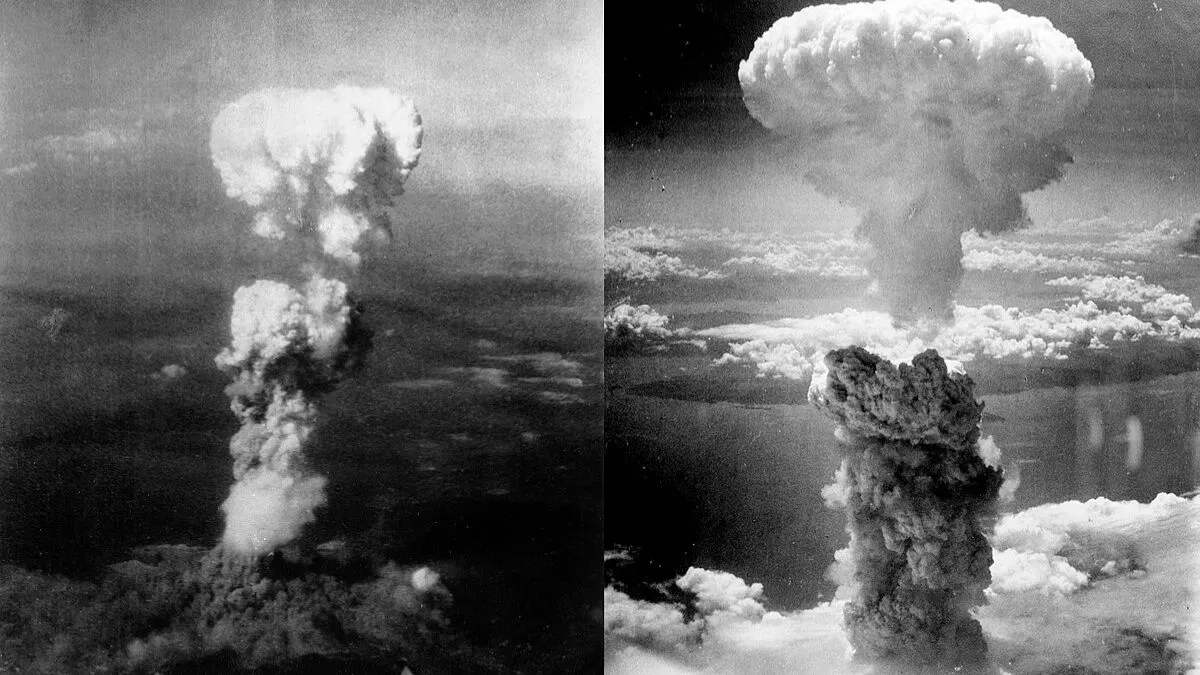Hiroshima Day 2025: Hiroshima Day is observed on August 6 every year and this year marks the 80th year of the world’s first nuclear attack in the Japanese city of Hiroshima. The nuclear bombing of Hiroshima took place on August 6 1945, which is regarded as a moment that would forever alter the course of the 20th century. As per the website of the Imperial War Museums, “At 8.15 on the morning of 6th August 1945, the Japanese city of Hiroshima was devastated by the first atomic bomb to be used as a weapon of war. The bomb, nicknamed ‘Little Boy’, was dropped from the USAAF B29 bomber Enola Gay and exploded some 1,800 feet above the city.” Many reports claimed that some 5 square miles of Hiroshima’s centre were reduced to ashes, causing the deaths of an estimated 120,000 people. Imperial War Museums reported that, “Many were instantly vaporised by the explosion, others died afterwards from the effects of burns and radiation.”
After a period of three days, Nagasaki faced another nuclear bomb attack on August 9, 1945. The Hiroshima attack claimed approximately 140,000 people in Hiroshima, followed by 74,000 in Nagasaki. It is estimated that both the bomb attacks killed 38,000 children, approximately. In the years that followed, many of the survivors would face leukaemia, cancer, or other terrible side effects from the radiation. As Hiroshima Day 2025 marks the completion of 80 years, the chilling events remain as relevant as today. They are not just stories of the past but urgent reminders of the catastrophic consequences of nuclear warfare. Here are seven chilling facts about the Hiroshima and Nagasaki atomic bombing that still haunt history even after 80 years.
Unknown Facts About Hiroshima And Nagasaki Atomic Bombing
Five Japanese Cities Were On The US’ Initial Hit List
The initial hit list if the US included Japanese cities like Kokura, Hiroshima, Yokohama, Niigata and Kyoto, but not Nagasaki. It is said that Kyoto was ultimately spared because US Secretary of War Henry Stimson was fond of the ancient Japanese capital, as he spent his honeymoon there three decades earlier. Thus, instead of Kyoto, Nagasaki bore the devastating fate. The United Kingdom gave its consent to the bombing of four cities on July 25, 1945, which included Kokura, Niigata, Hiroshima and Nagasaki.
ALSO READ: ‘9/11 To Hiroshima’: Chilling Predictions By Baba Vanga And Nostradamus That Came True
The Hiroshima And Nagasaki Bombs Were Based On Different Designs
The atomic bomb named the “Little Boy” was dropped on Hiroshima, which was made of highly enriched uranium-235, while the “Fat Man” bomb was dropped on Nagasaki and was made of plutonium. The Nagasaki bomb was regarded as a more complex design.
The Codename Of At Least One Of The Bombs Was Taken From The Film The Maltese Falcon
The codenames of the bombs, Little Boy and Fat Man, were chosen by their creator Robert Serber, who apparently drew inspiration from John Huston’s 1941 film The Maltese Falcon. In the movie, Fat Man is a nickname for Sydney Greenstreet’s character, Kasper Gutman. On the other hand, the name Little Boy is said to have derived from the epithet that Humphrey Bogart’s character, Spade, uses for another character called Wilmer. Although this has been discredited since then, as Spade calls Wilmer “boy” and never “little boy”.
The Most Destructive World War II Bombing Attack On Japan Was Not Hiroshima & Nagasaki
Operation Meetinghouse, the US firebombing of Tokyo on 9 March 1945, is considered the deadliest bombing raid in history. A napalm attack carried out by 334 B-29 bombers, Meetinghouse killed more than 100,000 people, leaving an innumerable number of people injured.
Victim Of Hiroshima And Nagasaki Bombing (Image Credits: Wikimedia Commons)
Haunting Shadows Were Imprinted Into The Ground When The Atomic Bomb Hit Hiroshima
The atomic bomb blasted in Hiroshima with such intensity that it permanently burned the shadows of people and objects into the ground. These came to be known as “Hiroshima shadows”.
ALSO READ: Oppenheimer Controversy: What Makes Christopher Nolan’s Film Most Discussed Topic Of The Year?
The Two Atomic Bombings Killed At Least 150,000-246,000 People
It is estimated that between 90,000 and 166,000 people were killed in the Hiroshima attack, while the Nagasaki bomb caused the deaths of 60,000-80,000 people.
A Flame In Hiroshima’s Peace Memorial Park Has Burned Continuously Since It Was Lit In 1964
The “Peace Flame” will remain lit until all nuclear bombs on the planet are destroyed and the planet is free from the threat of nuclear destruction.
